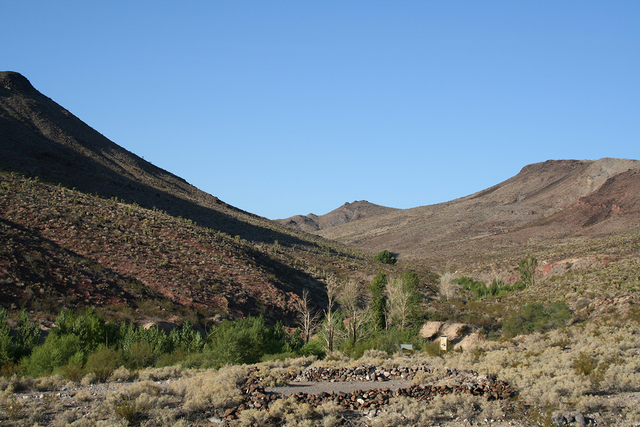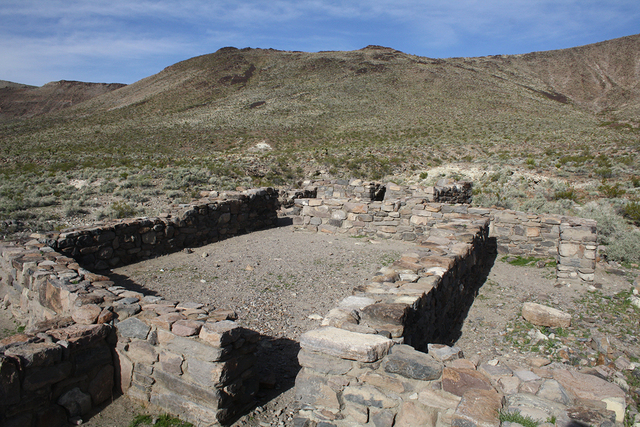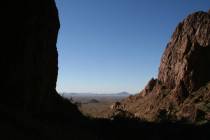Fort Piute a Mojave National Preserve treasure


Many of the treasures offered by the 1.6 million-acre Mojave National Preserve can be found only by traveling on remote gravel roads. One such destination is Fort Piute in the extreme eastern region of the park.
While this area is pretty isolated, those who enjoy getting off the beaten path will love this destination. When you reach Fort Piute, you will find the ruins of an old military outpost and American Indian petroglyphs. You will also find a natural treat special in this region: a perennial stream with riparian vegetation. This is also the start of wildflower season, and if Mother Nature cooperates, you might get an added bonus of some good showy color.
In the 1860s, the Mojave Road served both civilian and military travelers, mail carriers and supply wagons between Arizona Territory and California. The U.S. Army built a series of small military posts, including Fort Piute, to protect these travelers. It was built of volcanic rock on a small rise at the mouth of a canyon at the base of the Piute Range.
The fort was small by most standards. It basically consisted of two roofed structures, one for horses and one for men, purposely close together to deter raiders from stealing their horses or supplies. It is thought that the number of men stationed at the fort never exceeded 18 and was sometimes only a couple. Yet, for all its simplicity, the design had clever features such as entryways with right-angle turns, so no sniper could hit a soldier by shooting directly into the opening. This post was used for only several months, for the main traveling route was soon moved a short way to the south. The fort has been stabilized many times yet remains fragile, so resist sitting or walking on the fort’s remaining walls.
Just a couple of hundred yards from the post, you will find Piute Creek, surrounded by thick vegetation. A fire burned this area more than 10 years ago, but it has rebounded. Cottonwood, willow and mesquite flank the drainage. In the surrounding hillsides, you will see a scrub habitat, including barrel cactus, beavertail, buckhorn cholla and Mojave yucca.
This time of year, rattlesnakes start to appear, so don’t put your hands or feet anywhere you haven’t looked first. One of the most dangerous in this area is the Mojave green.
Look for red-tailed hawks, golden eagles and phainopeplas, who often feast on the red berries of the desert mistletoe.
Spend time admiring the petroglyphs etched in the desert varnish on the large volcanic boulders near the creek. The Paiute, Mojave and Chemeheuvi Indians are known to have used his area. Most of the rock art is abstract, but there are interesting panels depicting bighorn sheep and the sun. Be sure not to touch the rock art or disturb the boulders in any way.
Make sure you have good off-road tires and a high-clearance vehicle. Cellphones do not pick up a signal at the fort, so make sure some reliable friend knows where to look for you should some mishap prevent your timely return home. All access roads in this area are subject to flash flooding, so save this trip for another day if rain threatens.
Directions:
From Las Vegas, take U.S. Highway 95/93 south for about 20 miles. After Railroad Pass, go right onto U.S. 95 south for about 55 miles. Drive past the state Route 163/Laughlin turnoff, and cross over into California. Drive about 6.5 miles to mile marker 75, and go right onto a gravel road. Follow this for 7.1 miles, and go right onto the power-line road. Drive 1.3 miles, go left onto a gravel spur road and follow for about 1.7 miles to the parking area.
Deborah Wall is the author of “Great Hikes, A Cerca Country Guide” and “Base Camp Las Vegas: Hiking the Southwestern States,” published by Stephens Press. She can be reached at deborabus@aol.com.












